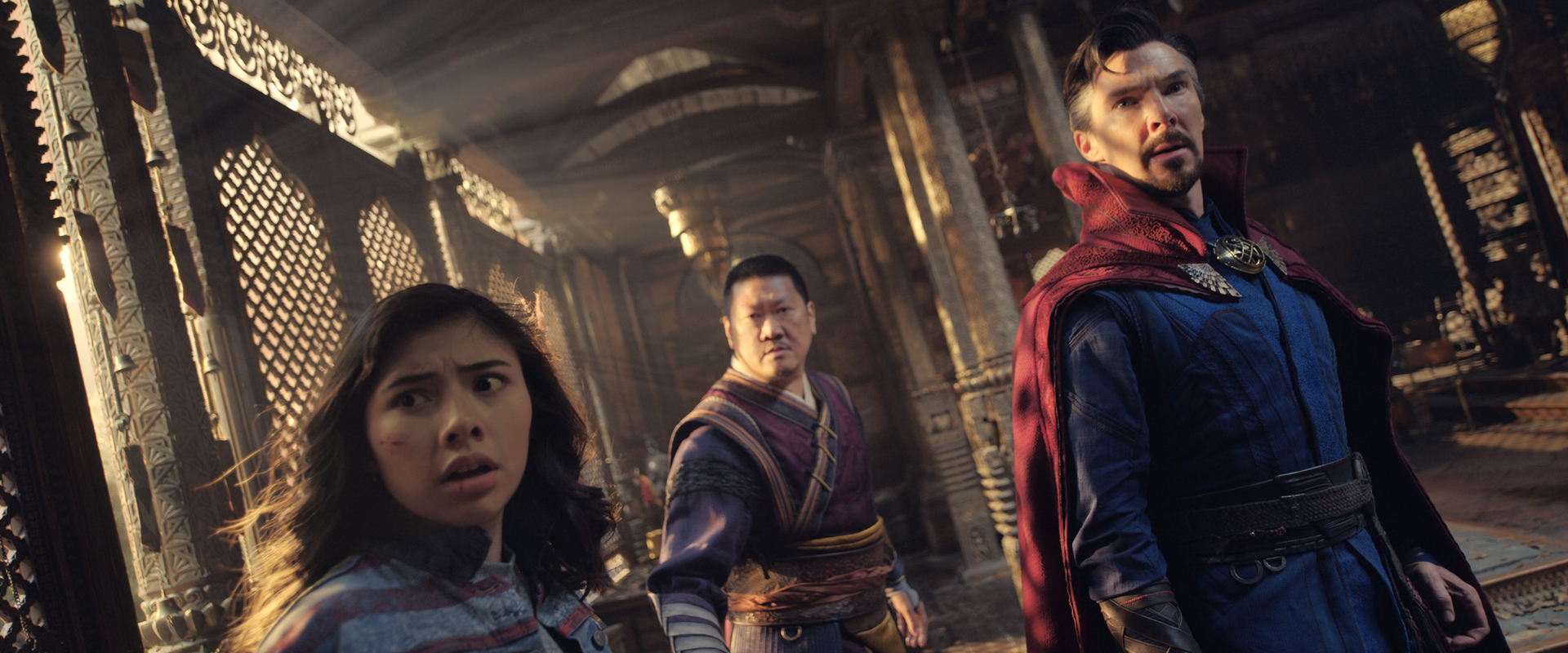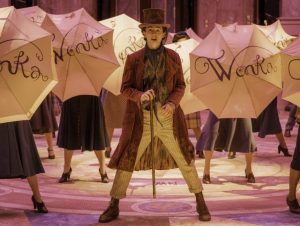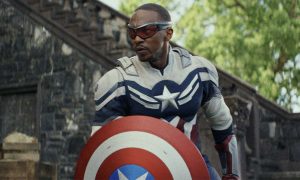
Doctor Strange in the Multiverse of Madness (2022)
Enter a new dimension of Strange.
Back from the dead, having helped save half the universe from Thanos and no longer the Sorcerer Supreme (Wong got the gig after 50% of all life got dusted in the climax of Infinity War), surgeon-turned-mystic Doctor Stephen Strange (Benedict Cumberbatch) is all set to wistfully watch his former love, Christine Palmer (Rachel McAdams), walk down the aisle with another man — being dead for five years did the good Doctor no favors in the romance department.
 100vw, 616px” /></a><figcaption id=) Hero or villain?
Hero or villain?But that’s okay because there’s superheroing to be done! A giant tentacled monster starts busting up New York City mid-reception, and it turns out it’s chasing America Chavez (Xochitl Gomez), a fresh arrival from a parallel universe. She’s got the power to open portals between different dimensions, and something or someone is siccing giant monsters on her for unknown reasons. This sounds like a job for Doctor Strange, but it also sounds like a big job, so he ropes in Wanda Maximoff (Elizabeth Olsen), aka The Scarlet Witch, for help.
Doctor Strange in the Multiverse of Madness is directed by Sam Raimi, and that should be more than enough to get you to show up for this one. It’s been a long time between drinks; the Evil Dead (1981 – 92) and Spider-Man (2002 – 2007) director’s last theatrical release was the less-than-stellar Oz the Great and Powerful back in 2013, which means almost a decade without his specific brand of gonzo, pulpy filmmaking on the big screen.
 100vw, 616px” /></a><figcaption id=) A dream, or another universe?
A dream, or another universe?Here he gets to combine the big-budget spectacle of his Spidey flicks with the pop-horror sensibilities that made the Evil Dead movies — plus Darkman (1990) and Drag Me To Hell (2009) — so much fun. The aesthetic vibe here is definitely Raimi, and even the demands of Marvel’s style of shared-world filmmaking don’t dilute his style to any great degree (although some dodgy CGI in the more mundane scenes tries hard) — it’s all very kinetic and expressionistic, presenting us with gorgeous tableaux on the reg as we traipse across various weird dimensions as the plot unfolds. It also gives us the two things every Raimi movie should have — a Bruce Campbell cameo and a certain Oldsmobile.
But I must say that the Raimi elements landed better for me than the MCU elements, by and large. Smartly, the film packs the bulk of its Easter eggs and cameos into one sequence, which comes across as both a fun bit of business (there are characters here that’ll make fans cheer) and a wee bit cynical. We’re faring better when the film is more freewheeling and chaotic, allowing Raimi and his actors to indulge themselves in high weirdness and spooky business. A third-act narrative choice — which I won’t spoil as much as I’d like to — allows Raimi to really pull out the stops on the macabre and demonstrates how broad a church the MCU can be. It’s easy enough to slam Marvel for being a production line rather than a production house, but like the auteurs of the Golden Age, Raimi demonstrates that you can still put your voice into studio product if you have the chops, and by God, he does.
 100vw, 616px” /></a><figcaption id=) It’s a Strange world.
It’s a Strange world.Benedict Cumberbatch has well and truly settled into the role of Doctor Strange, now the de facto elder statesman of the MCU, after only one solo movie (pretty good for a non-Avenger, really). You may recall he wobbled a bit in 2016’s Doctor Strange, but after Thor: Ragnarok (2017), Avengers: Infinity War (2018), Avengers: Endgame (2019), and last year’s Spider-Man: No Way Home, he’s really made the character his own. His Strange has a strong awareness of what he’s sacrificed to be who he is and the roads not taken, and that sadness helps differentiate him from the last Marvel main man with a massive ego and odd taste in facial hair.
Benedict Wong as, uh, Wong, is great as ever and made me realize I’d like to see him take the lead role in a Sammo Hung biopic. Newcomer Xochitl Gomez really pops as America, even if that name makes a few earnest lines of dialogue quite laughable to non-American audiences.
 100vw, 616px” /></a><figcaption id=) What fate awaits in the multiverse?
What fate awaits in the multiverse?But the real stand out here is Elizabeth Olsen, who anchors the film with her haunted, sometimes harrowing turn as the grief-wracked Wanda. Really, Multiverse of Madness is a direct sequel to WandaVision (2021) rather than 2016’s Doctor Strange — indeed, a bit of business with an alternate version of Baron Mordo (Chiwetel Ejiofor) seems to imply events between Strange 1 and Strange 2 that we’re not privy to. While everything around her is kind of goofy in the best possible four-color Mighty Marvel Manner, all spells and demons and sight gags and whatnot, Olsen is doing a quiet, measured portrait of sadness and rage, having dealt with the death of her brother, her lover, and her magically created kids in a pretty short period of time. It’s beautiful work.
If that last paragraph was somewhat impenetrable to you, that’s because Multiverse of Madness’ chief problem is that it demands a certain familiarity with the MCU as a whole — at the very least, you need to be across WandaVision and the main Avengers arc, and for full appreciation you want to be down with a lot of comics lore as well, plus Marvel’s What If…? (2021) animated series. That’s a barrier to entry — I wouldn’t say you can’t go in cold and have a good time, but there’s a chance a noob will get lost in the details. Whether these franchise-building choices drive viewers away from the MCU or invite them to delve deeper into the world is up for debate — box office success suggests the latter.
 100vw, 616px” /></a><figcaption id=) Alternative reality problems.
Alternative reality problems.Really, the overarching plot of the MCU (we’re in Phase Four, right?) isn’t doing much at the moment — we’re not building up to a Thanos type of character, Kang is a bit of a damp squib, and the sense of progressive, large-scale storytelling isn’t really there anymore as different sub-franchises pursue their own throughlines and the Disney+ TV shows do their thing. Even though Doctor Strange in the Multiverse of Madness is steeped in canon, it doesn’t feel like a vital step to a bigger climax down the track, and perhaps the trick now is to learn to allow the Marvel movies to simply exist in the same continuity without constantly having to reference the fact. This latest offering doesn’t manage that, obviously, but it’s still a pretty great movie for fans and a pretty good movie for newcomers. All else aside, let’s just be happy to have Sam Raimi directing theatrical features again — lord, how I’ve missed him.
3.5 / 5 – Great
Reviewed by Travis Johnson
Doctor Strange in the Multiverse of Madness is released through Disney Australia


